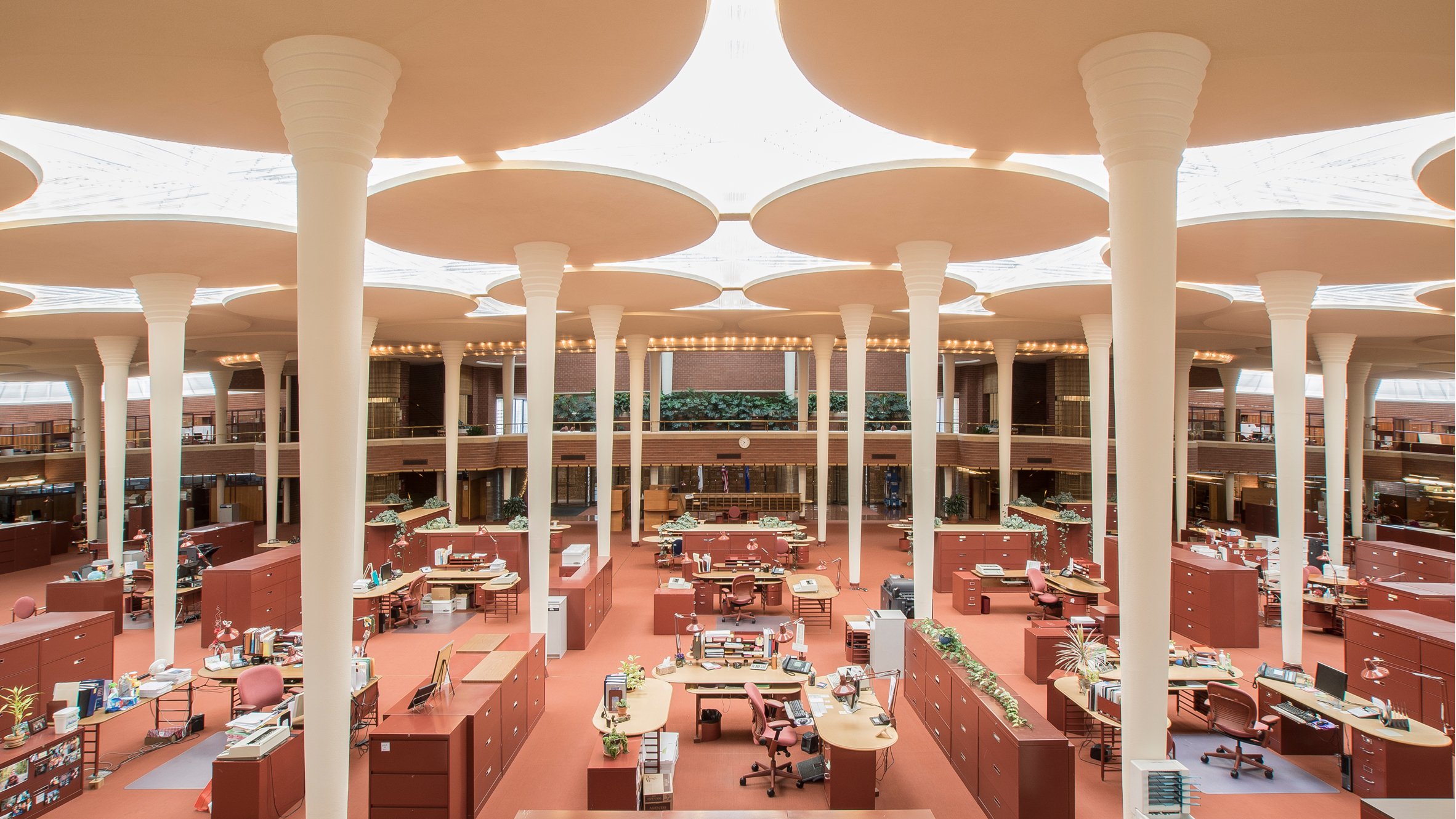
Most learning environments, including classrooms, lecture halls, and libraries, have uniform lighting. Such lighting is typically provided by fluorescent or more recently led fixtures that cover the full ceiling. But recent research along with a long standing architectural masterpiece suggests that varying lighting might be beneficial for mental health and well being conducive learning.
A recent study by Thomas Astell-Burt and Yiaoqi Feng concluded that more exposure to tree canopy was associated with lower levels of psychological distress and lower incidence of poor general health. Specifically, “adults with 30% or more of their neighborhood covered in some form of tree canopy had 31% lower odds of developing psychological distress” and “33% lower odds of developing fair to poor general health.” Tree canopy, of course, provides a varied lighting environment as the light sifts through the overhead limbs and leaves. In addition, to lighting diversity, there is evidence that tree canopy is associated with greater biodiversity.
While the positive impact of tree canopy on well being in outdoor spaces is interesting, how do we make the big jump to learning spaces? An important clue may be found in Frank Lloyd Wright’s design of the Johnson Wax Headquarters which has been described as a “forest open to the sky.” The interior lighting plan included a series of tree-like columns extending to the ceiling backed by skylights that created an interior tree canopy arrangement.

Wright’s interior recreation of a tree canopy offers variation in lighting and at least suggests some potential benefits for inhabitants, but how might the connection to learning environments or environments to support creative work be made? Subscribers to the law of requisite variety may appreciate the potential contribution of variation in the learning environment to meeting the challenge of taking on complex problems. At the very least, designers of lighting for learning environments may want to consider the research on tree canopy and Wright’s classic work environment lighting design before they adopt a uniform lighting plan.


Be the first to comment